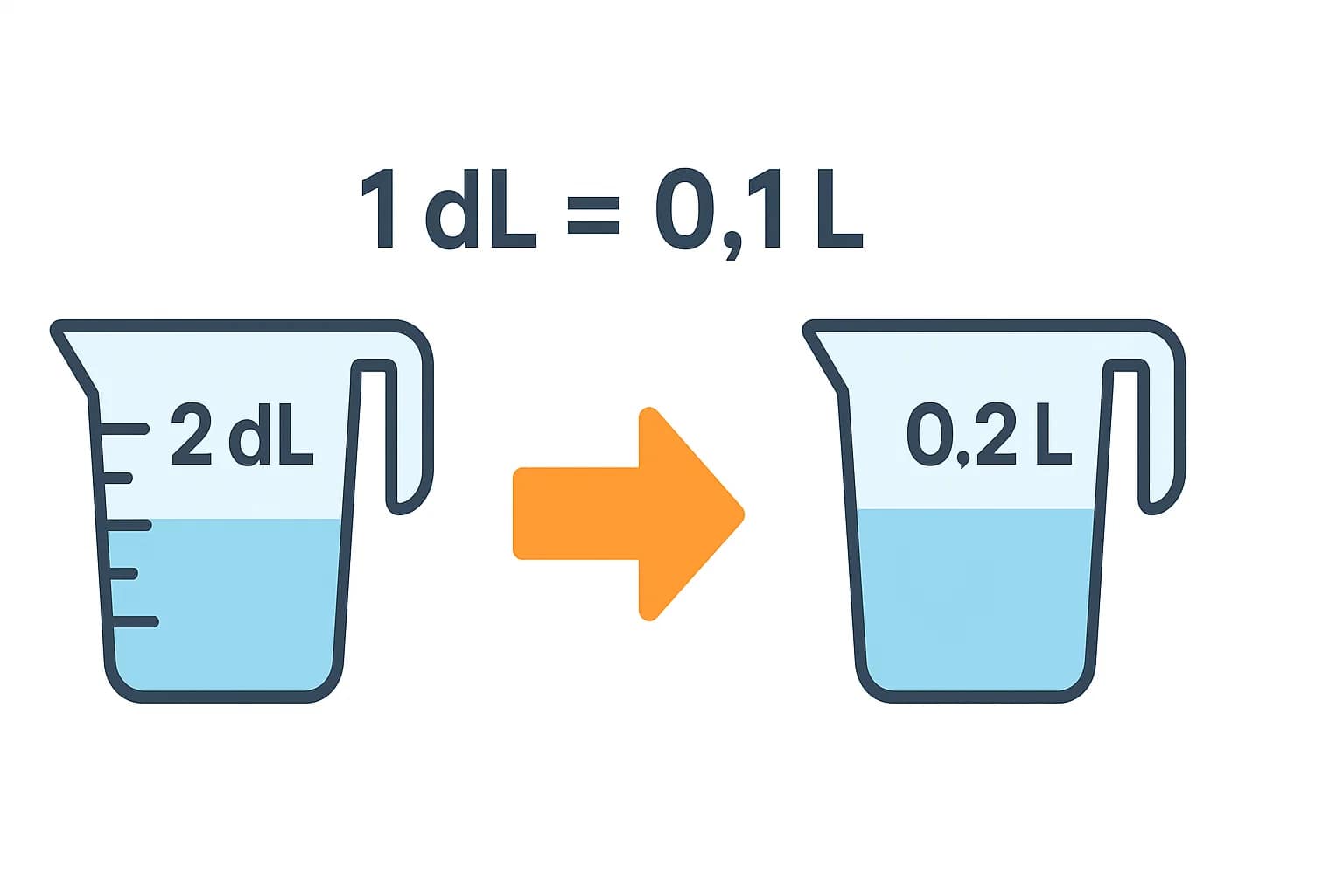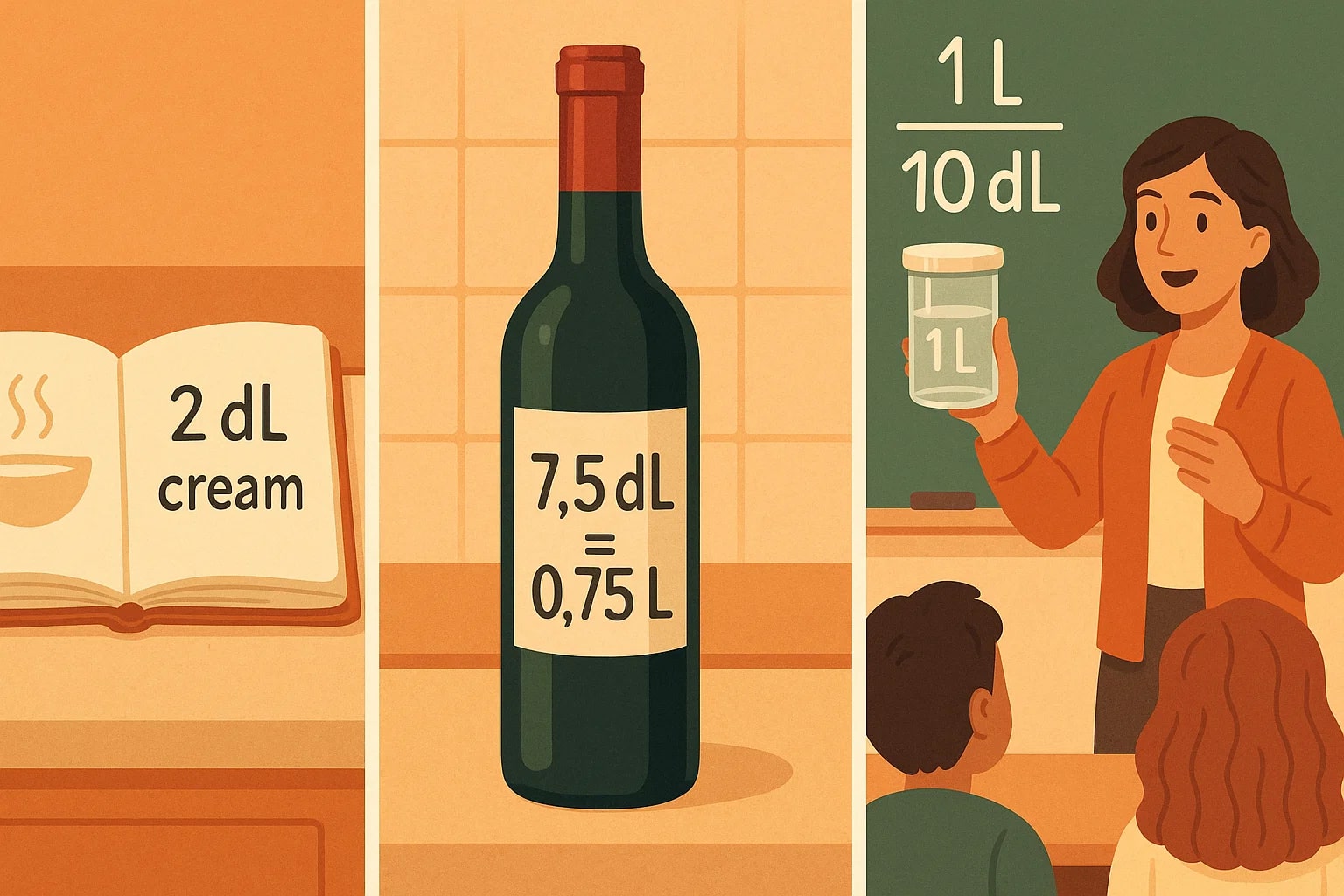deciliter to liter – How to convert dL to L
The conversion from deciliters to liters is one of the simplest in the metric system. Deciliters appear in recipes and food packaging, while liters are standard for drinks, fuel, and science labs. Switching between them is straightforward thanks to the base-10 structure of the metric system.
What is a deciliter (dL)?
A deciliter equals one tenth of a liter (1⁄10 L). It is common in European cookbooks, where you might see 2 dL of milk or 1.5 dL of sugar. The unit helps break liters into more practical amounts for cooking and small containers.
What is a liter (L)?
A liter is a base metric unit equal to 1000 cm³ or 1 dm³. It is the global standard for beverages, household products, medical solutions, and scientific use. Bottled water, soft drinks, and fuel are almost always labeled in liters.
Conversion formula – deciliter to liter
The relationship is straightforward.
The base equivalence is:1 dL = 0.1 L
To convert deciliters to liters:1 deciliter = liter × 0.1
Examples:
5 dL = 0.5 L

For quick results across more volume units, Jetcalculator’s Volume Converter and its set of Conversion Tools provide reliable answers in seconds.
Do you know?
-
In European recipes: Cookbooks frequently call for deciliters, but the same quantities are often written in liters in international versions.
-
In beverages: Wine bottles or soda packaging sometimes use dL on labels — for example, 7.5 dL equals 0.75 L.
-
In science education: Students may first measure liquids in dL to visualize fractions of a liter before switching to the base unit.
Recipes, bottles, and classrooms
This conversion shows up in daily life in many ways. A recipe may call for 2 dL of cream, while the container in your fridge lists 0.2 L. In shops, a wine bottle labeled 7.5 dL is the same as 0.75 L, but which unit you see depends on local convention.
In classrooms, teachers use deciliters to help students grasp fractions of a liter, making the concept of 1 L = 10 dL both visual and practical.

One tenth at a time
The formula 1 dL = 0.1 L highlights how the metric system scales smoothly. Deciliters break a liter into ten easy parts, making them perfect for recipes and small packaging. Liters, on the other hand, serve as the universal standard in trade and science.
Together, they show how one system of measurement adapts seamlessly between everyday cooking and global commerce.

